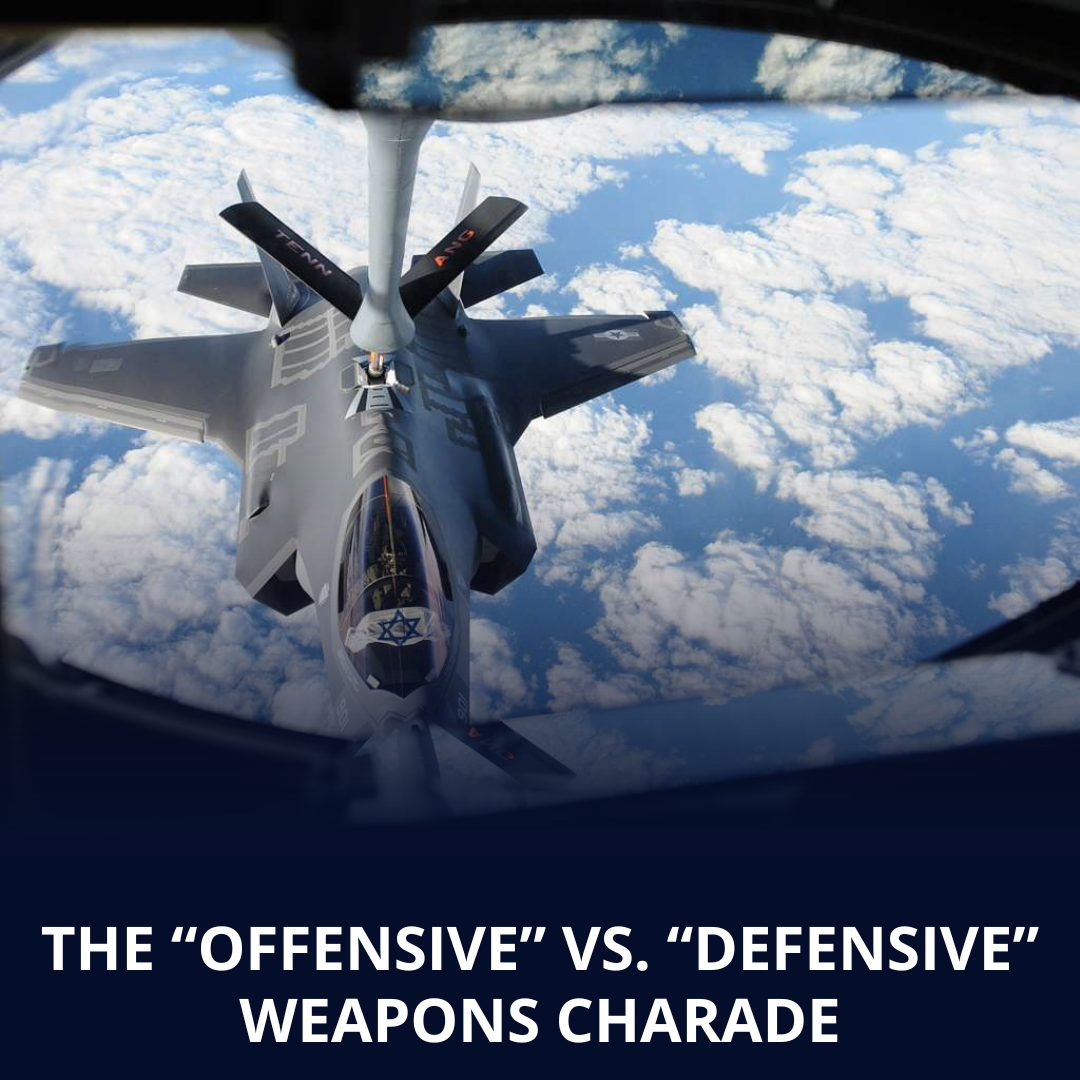
As the debate around the future of U.S. military assistance to support the Israeli people continues, some Members of Congress have borrowed a disingenuous talking point originally deployed by China and Iran to stop the U.S. from supplying Ukraine with needed weaponry.
These Members — some of whom have anti-Israel records — claim to support funding for Israel’s missile defense systems, like Iron Dome, while opposing sending additional “offensive” weapons to Israel.
This reflects, at best, a misunderstanding of how weapons are used in real-world situations and, at worst, a dangerous step towards abandoning the Israeli people at a time when they face continued threats from Iran and Iranian-backed terrorist groups.
For example, F-15 and F-35 jets might be considered “offensive” weapons in some circumstances, but they were used to help shoot down Iranian missiles headed for Tel Aviv when Iran directly attacked Israeli civilians there and in other major cities in 2024 and 2025. Had Israel not had those aircraft, thousands of Israeli civilians could have been killed by Iran.
In a Washington Post analysis of arming Ukraine, Professor Stephen Biddle, senior fellow for defense policy at the Council on Foreign Relations, writes that the distinction between “offensive” and “defensive” weapons is “so blurry as to be effectively useless.”
Among the arguments Biddle makes: “Most weapons can be used for both offense and defense… Almost any weapon can be used either to attack or to defend.”
Rifles can be used in offensive operations, as well as for self-defense. Tanks were used for offense by the allies from D-Day onward during World War II. However, at the Battle of the Bulge they were defensive weapons. Outnumbered Israelis defended the Golan Heights against Syrian attacks in 1973 using tanks.
Missiles and aircraft can strike enemy territory, but by destroying the supplies attackers need or by assailing enemy forces, they can play a central role in defense. Allied attacks far behind enemy lines in North Africa helped successfully defend against Rommel’s offensive during World War II.
Biddle also argues that “self-defense requires both offense and defense.”
Iron Dome, along with similar systems like David’s Sling and Arrow, is perhaps the purest form of a defensive weapon. They are only used to defend against rocket and missile attacks. For example, they protect hundreds of thousands of Israeli civilians in northern communities from Hezbollah rockets, protect the kibbutzim and southern communities along the Gaza border from Hamas rockets, and protect Israelis throughout the entire country when they come under attack from the Houthis, Iran, or other adversaries.
However, no system can be counted on to consistently be 99% effective.
Real defense requires the ability to destroy missile launchers, as well as the ability to knock incoming missiles out of the sky. To say, in effect, Israel’s enemies are free to launch as many missiles, rockets, and drones against it as they wish, but Israel is only permitted to attempt to bat them down before they kill Israeli civilians, is to ensure more civilian deaths and more war.
Ultimately, a cutoff of “offensive” weapons only results in the weakening of Israel’s defense of Israeli citizens – from the peace activists serving reserve duty in Gaza, to the tech entrepreneurs in Tel Aviv who are finding innovative solutions to the world’s problems, to the children living in kibbutzim on Israel’s northern border and who have been subjected to relentless missile attacks from Hezbollah.
Finally, and perhaps most importantly, Israel relies on deterrence.
Unlike the U.S., Israel is a tiny country that lacks strategic depth. (Geographically, the U.S. is the third largest country in the world, while Israel ranks 153rd in size.) Historically, America’s enemies have been thousands of miles away from our shores, while enemies of the Israeli people sit right on Israel’s borders: the people of Israel are surrounded by Iranian-backed terrorist groups including Hamas in Gaza and Hezbollah in Lebanon; Syria, on Israel’s northern border, has invaded or attacked Israel in three major wars since 1948; Israel has had to fight two major wars in Lebanon, on its northern border; and further afield, the Houthis in Yemen continue to launch rockets and drones targeting Israeli civilians.
Key to Israel’s security strategy is to continuously dissuade its enemies from attacking. Deterrence fundamentally relies on offensive capabilities. Iran and its proxies don’t attack when they fear an overwhelming offensive response that would take an unacceptable toll.
Restricting transfers of “offensive” weapons to Israel undermines two critical elements of Israel’s deterrent, making war more likely rather than less. By design it reduces Israel’s offensive capabilities, and by the design of some, it suggests a wedge between Israel and the U.S.
Those supporting additional restrictions on offensive weapon sales to Israel speak of peace, but by degrading Israel’s ability to deter adversaries committed to its destruction, they will bring more war and more suffering, not peace.
